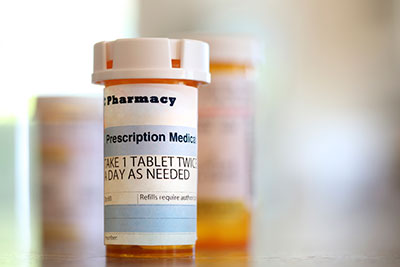Stimulant Prescriptions Spiked During Pandemic, CDC Finds
Abstract
The percentage of individuals enrolled in employer-sponsored insurance plans who were prescribed stimulants rose from 3.6% in 2016 to 3.8% in 2020, then jumped to 4.1% in 2021.

The percentage of adults receiving prescriptions for stimulants increased from 2016 to 2021 and jumped from 2020 to 2021, particularly among women, according to the CDC’s March 31 Morbidity and Mortality Weekly Report.
Melissa Danielson, M.S.P.H., a statistician in the CDC’s Division of Human Development and Disability, and colleagues analyzed 2016-2021 claims data from the Merative MarketScan Commercial Database, a national sample of de-identified health care claims from enrollees in employer-sponsored insurance plans. The authors included all stimulant prescriptions in the analysis, regardless of whether an enrollee’s records had any ADHD diagnosis codes present. They calculated percentages and annual changes in stimulant prescriptions for enrollees aged 5 to 64 years.
The rate of enrollees with stimulant prescriptions increased from 3.6% in 2016 to 3.8% in 2020, then jumped to 4.1% in 2021. Across all years, the rate of male enrollees with stimulant prescriptions was highest among those aged 5 to 19 years, while the rate of stimulant prescriptions among females was highest among those aged 15 to 24 years. The largest single-year increases occurred from 2020 to 2021, with the annual change in stimulant prescriptions exceeding 10% in many age groups.
The authors noted that most enrollees with stimulant prescriptions also had a record of an ADHD diagnosis. They also pointed out that increased need, the expansion of telehealth, and relaxing the requirement for in-person care before prescribing a stimulant during the pandemic may have encouraged more adults with ADHD symptoms to seek treatment.
Other findings from the report included the following:
For both males and females, the rate of stimulant prescriptions remained stable or decreased from 2016 to 2020 among those 24 years or younger and remained stable or increased modestly among those aged 25 to 64 years.
From 2020 to 2021, the rate of females with one or more stimulant prescription fills increased substantially among most age groups, with the largest changes among those aged 15 to 44 and 50 to 54 years (percentage changes ranged from 14.3% to 19.2% among the different age groups).
From 2020 to 2021, the rate of males with prescription stimulant fills decreased among those aged 19 and younger and increased substantially among those aged 25 to 44 and 50 to 54 years (percentage changes ranged from 11.1% to 14.7% among the different age groups).
“Although seemingly rapid increases in ADHD treatment-seeking may alarm, this increase may be medically appropriate,” wrote Craig Surman, M.D., and his colleagues in an editorial in the Journal of Attention Disorders. Surman is the director of the Clinical and Research Programs in Adult ADHD at Massachusetts General Hospital and an associate professor at Harvard Medical School.
“[W]e cannot be certain that all patients prescribed stimulants have ADHD or that all prescriptions represent appropriate or effective treatment,” but they noted that prescription rates came closer to ADHD’s expected prevalence in adults from 2016 to 2021.
In his own practice, Surman has had several female patients who explained that their responsibilities and social connection before the pandemic created accountability in their lives that allowed them to stay organized. When that disappeared in 2020 with the pandemic lockdowns, they realized that there were certain aspects of their lives that they couldn’t manage on their own without external structure.
“Very often, people are not diagnosed as children because they weren’t hyperactive or there was enough structure around them that they could still operate, even if they struggled with self-organization,” Surman said. Unlike for children, whose caregivers connect them with treatment, accessing care for ADHD as adults is consumer-driven, he added. “For whatever reason, women in the 15 to 25 age group seem to have been seeking care disproportionately more in 2021 compared with previous years.”
Successful treatment for ADHD in adulthood can transform individuals from being reactive and unable to function in important roles in their lives to being proactive and able to thrive in their lives, Surman continued. “It’s very profound,” he said. “If one of those roles we’re talking about is self-care, then from a medical perspective, treatment is incredibly important. It’s one thing to be on top of your social life and perform for your employer, but taking care of yourself physically and mentally has very significant health benefits.” ■



